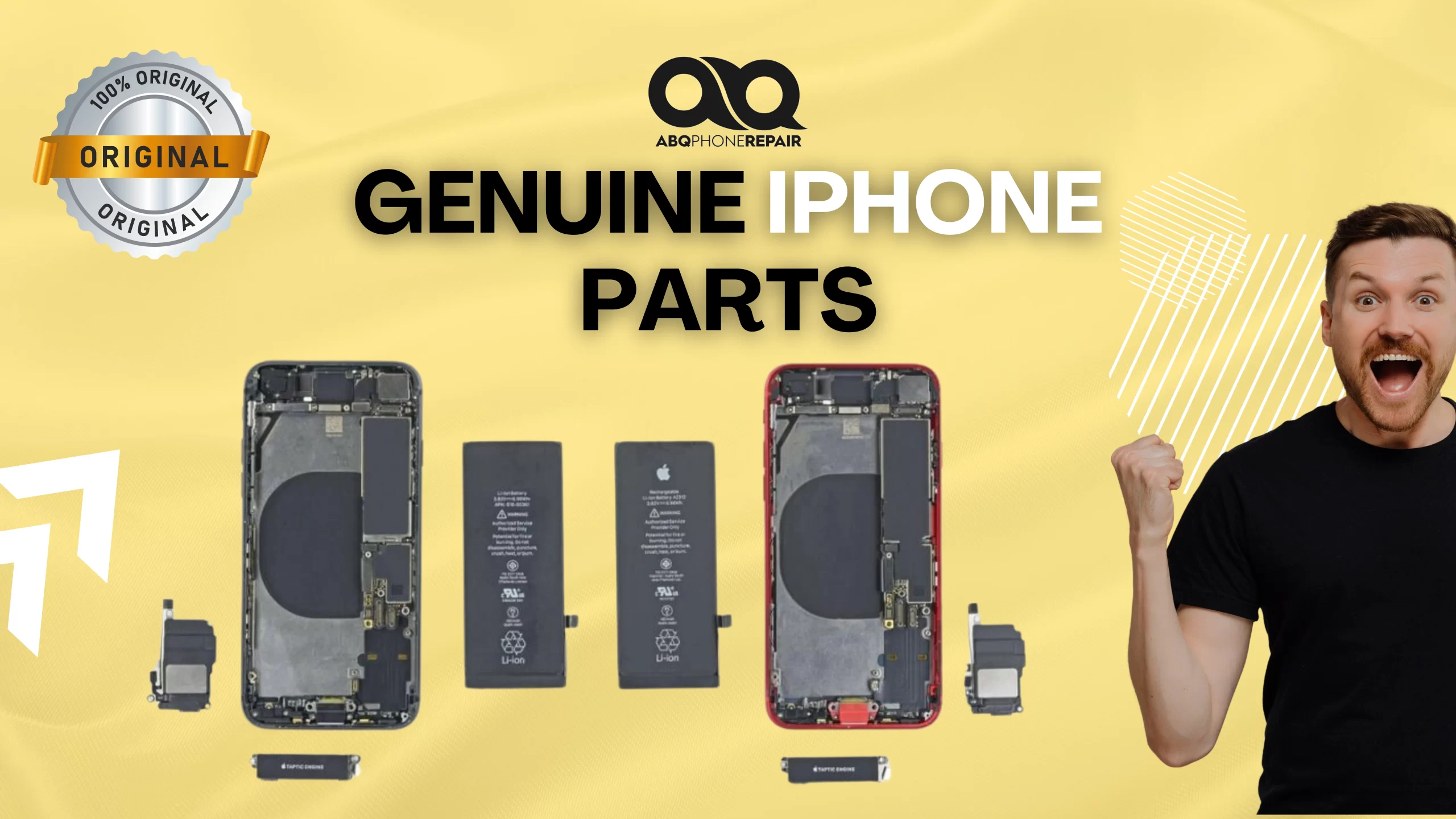Are you worried about the authenticity of your iPhone’s parts? Whether you’ve had your iPhone repaired or you’re considering buying a second-hand device, knowing if it contains genuine Apple parts is crucial. Thanks to Apple’s latest iOS update, you can now check this without even opening your phone! Let’s dive into the details of how to identify real vs. fake iPhone parts and why it matters.
Why Genuine Apple Parts Matter
Before we get into the how-to, let’s understand why using authentic Apple parts is so important:
- Safety First: Counterfeit parts, especially batteries, can pose serious safety risks. They might overheat, swell, or in extreme cases, even explode under normal use.
- Optimal Performance: Your iPhone is designed to work best with genuine Apple parts. Using counterfeit components might lead to reduced performance or unexpected issues.
- Warranty Protection: Using non-genuine parts could void your iPhone’s warranty, leaving you unprotected if something goes wrong.
- Longevity: Authentic Apple parts are built to last, ensuring your device remains functional for longer.
- Resale Value: iPhones with genuine parts typically fetch higher resale prices in the second-hand market.
How to Check for Genuine Apple Parts
Apple has introduced a new feature in iOS 15.2 that allows you to check whether your iPhone has genuine Apple parts. Here’s a step-by-step guide:
- Update your iPhone to iOS 15.2 or later.
- Go to “Settings” on your iPhone.
- Tap “General”.
- Scroll down and tap “About”.
- Look for “Parts and Service History”. If you see this option, it means your iPhone has undergone a repair or part replacement.
What You Can Check
The information available in Parts and Service History varies depending on your iPhone model:
- iPhone XR, XS series, and iPhone SE (2nd generation): Battery status
- iPhone 11 series: Battery and display status
- iPhone 12 and 13 series: Battery, display, and camera status
Understanding the Results
When you tap on a component in Parts and Service History, you’ll see one of these messages:
- Genuine Apple Part: Good news! The part is authentic and functioning correctly.
- Unknown Part: This could mean the part is:
- Not genuine
- A genuine part that’s not functioning as expected
- A genuine part that has been used in another iPhone before
Why You Might See "Unknown Part"
It’s important to note that even if you see “Unknown Part”, it doesn’t always mean the component is counterfeit. Apple’s parts system is quite strict:
- Part Locking: Some parts are “locked” to specific devices. Even if you swap a genuine part from one iPhone to another, it might show up as “Unknown”.
- Unauthorized Repairs: If your iPhone was repaired by a non-Apple certified technician, even with a genuine part, it might be flagged as “Unknown”.
- Software Issues: Sometimes, software glitches can cause genuine parts to be misidentified.
Tips for Buying iPhone Parts
If you need to replace a part in your iPhone, keep these tips in mind:
- Authorized Sources: Always try to get parts from Apple or Apple Authorized Service Providers.
- Be Wary of Deals: If a deal seems too good to be true, it probably is. Genuine Apple parts are rarely discounted heavily.
- Check Seller Reputation: If buying from a third-party, thoroughly research the seller’s reviews and ratings.
- Verify Packaging: Genuine Apple parts come in specific packaging. Familiarize yourself with what it should look like.
- Compare Prices: Know the typical cost of genuine Apple spare parts to avoid overpaying or falling for counterfeits.
Common iPhone Parts to Watch Out For
When getting your iPhone repaired, pay extra attention to these critical components:
- iPhone Display Parts: The screen is not just about visuals; it also houses important sensors.
- Batteries: A counterfeit battery can be dangerous. Always insist on genuine Apple OEM parts for battery replacements.
- Cameras: For iPhone 12 and later, the camera system is complex and best served by genuine parts.
- Logic Board: While not commonly replaced, ensure any logic board repair uses authentic components.
The Right to Repair Movement
It’s worth noting that the Right to Repair movement has been pushing for easier ways to repair damaged iPhones. In response, Apple has taken steps to allow access to genuine parts and tools for independent repair shops. However, the company still maintains strict control over part authenticity and functionality.
Keep Your iPhone in Top Condition with Genuine Parts
Your iPhone is a valuable investment, and using fake or unreliable parts for repairs can cause long-term damage, affect performance, and even void your warranty. At ABQ Phone Repair & Accessories, we understand the importance of keeping your device in perfect working condition, which is why we use only genuine Apple parts in every repair.
Whether it’s an iPhone battery replacement, screen repair, or camera issue, our certified technicians ensure your iPhone receives the highest-quality service. Using non-genuine parts may seem like a cheaper option, but the risks, including safety hazards and malfunctions, aren’t worth it. With authentic Apple components, your device will function exactly as it should, preserving its performance, durability, and resale value.






